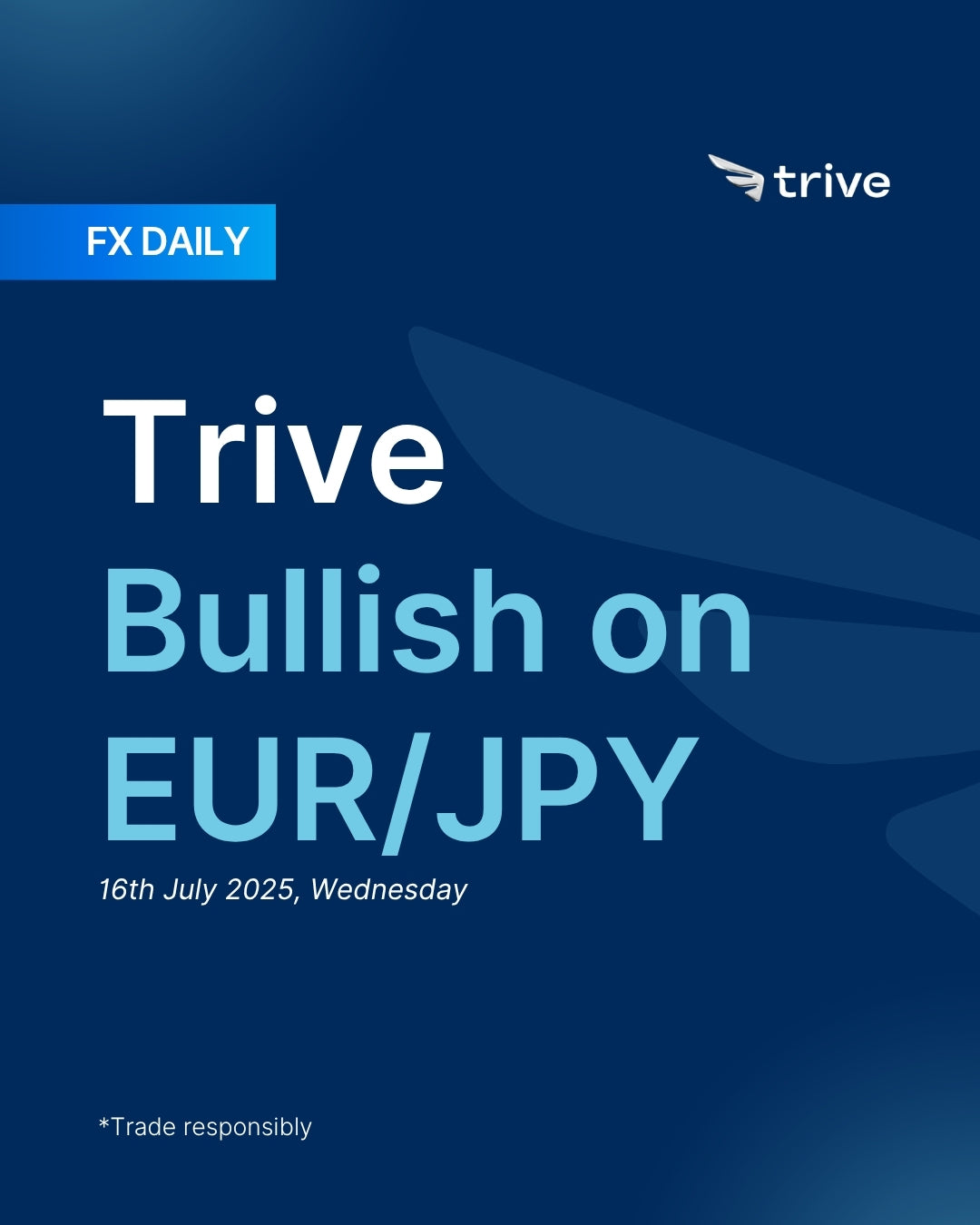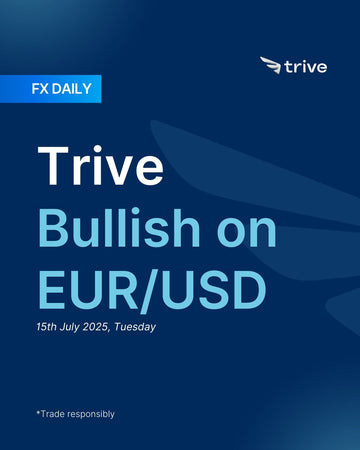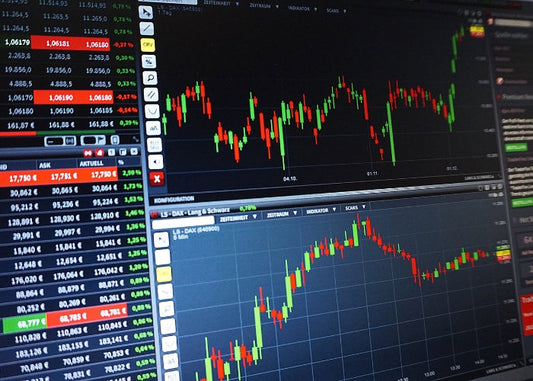FX Daily: Trive Bullish on EUR/JPY

EUR/JPY maintains a bullish outlook as eurozone resilience contrasts sharply with deepening yen weakness. The euro is supported by solid German data, upbeat sentiment, and reduced ECB easing bets, while the yen is weighed by trade tensions, weak domestic data, and a dovish BoJ. With rising US-Japan tariff risks and Japan's election uncertainty, EUR/JPY could grind higher on dips.
EUR: Buy in dips
The euro came under pressure all week as escalating U.S. trade rhetoric and broad-based strength in the dollar weighed heavily on the single currency. After peaking near 1.1830 last week, EUR/USD steadily retreated back toward the 1.16 area as markets struggled with conflicting signals about potential Trump administration tariffs. Even though some Eurozone indicators showed resilience and tentative optimism emerged around U.S.–EU negotiations, the dominant driver remained dollar strength and persistent uncertainty over trade policy.
Eurozone economic data offered a mixed picture. German industrial output surged by 1.2 percent month-on-month in May, rebounding strongly from the prior month’s 1.4 percent decline and providing welcome support for Europe’s largest economy. The July Sentix index of investor sentiment leapt to 4.5, up sharply from expectations around 1.1, signaling a meaningful improvement in confidence. Both Germany and France reported better-than-forecast trade results for May: Germany’s surplus widened to €18.4 billion on weaker imports, while France saw its deficit narrow to €7.8 billion. Despite these external-sector gains, retail sales across the euro area fell 0.7 percent in May, matching forecasts after a revised 0.3 percent rise in April. Inflation readings were similarly varied: French CPI under the EU harmonized standard rose 0.9 percent year-on-year in June, slightly above the 0.8 percent forecast, while Germany’s final HICP reading confirmed 2.0 percent year-on-year inflation.
Within the European Central Bank, policymakers offered a spectrum of views on the path ahead. ECB Vice President Luis de Guindos expressed hope that exchange rate stability would avoid negative spillovers, while Swedbank’s chief economist, Andreas Centeno, questioned whether a 25-basis-point cut would “do the trick,” highlighting downside risks. Jens Weidmann’s successor at the Bundesbank, Joachim Nagel, suggested the bank should “neither plan nor rule out” further rate adjustments. Chief economist Philip Lane emphasized a data-dependent approach and a meeting-by-meeting assessment in light of global policy shifts. On Friday, Isabel Schnabel struck a notably hawkish tone, arguing that the bar for another cut was “very high” and that further easing was “not appropriate,” whereas fellow Governing Council member Fabio Panetta countered that a continuation of rate cuts could be warranted if growth risks intensified disinflationary pressures. Market pricing still factors in about 19 basis points of ECB easing by year-end, although a cut in July is seen as highly unlikely.
The U.S. EU tariff saga remained front and center for euro-area markets. The week began with EU hopes of securing an agreement before the original July 9 deadline, which the U.S. later extended to August 1. Mid-week reports suggested Washington had offered a baseline 10 percent reciprocal tariff on all EU goods, excluding sectors like aircraft and spirits, creating a tentative path to de-escalation. President Trump then hinted on Wednesday that a formal tariff letter was “probably two days off,” fueling speculation of a temporary framework deal. Brussels nonetheless insisted its regulatory framework was non-negotiable. By Friday, Trump confirmed the EU would receive a letter detailing new rates, with market rumors ranging from a 20 percent blanket tariff to levies higher than those applied to the U.K., despite EU denials of direct notification. Alongside the U.S. spat, the EU navigated its own trade frictions with China, including reciprocal medical-device restrictions, adding another layer of complexity.
Overall, the key story for the euro was not internal fundamentals but rather the “USD story.” Strong U.S. labor-market data, fading dollar-short positioning, and the perception that Trump’s tariff moves were tactical all reinforced dollar strength. Ongoing trade uncertainty prevented a sustained euro bounce, and late-week nervousness over a potential U.S.–EU deal even prompted de-risking in luxury-sector equities, underlining how sensitive those names are to trade outcomes.
Despite persistent dollar strength, a string of encouraging euro area indicators suggests the Euro can mount a modest rally. Germany’s industrial output jumped 1.2 % in May and the Sentix investor sentiment index rose sharply to 4.5, underlining underlying resilience. Robust export numbers from Germany and France further bolster external demand support for the euro. Meanwhile, several ECB officials have hinted at a more cautious approach to rate cuts, reducing market expectations for policy easing. The US delay of its EU tariff deadline to August 1 has also eased near-term trade worries, clearing a path for a gradual euro upswing.
Assuming Tuesday’s Economic Sentiment survey and the final CPI readings meet or exceed expectations, we’ll maintain our weak bullish baseline outlook.
JPY: Tariffs and election risk
The Japanese yen endured a difficult week, weakening markedly against the US dollar as escalating US trade protectionist measures dominated market sentiment. The USD/JPY rate climbed steadily, breaching the 146 level and momentarily touching 147, as investors reacted to stalled progress in US-Japan trade talks and diminishing expectations for Bank of Japan rate hikes.
Early softness in Japanese wage data set the tone, undermining confidence in the currency’s immediate outlook. Producer price index figures released later in the week failed to prompt much market reaction, suggesting that inflationary pressures were not yet exerting a significant influence on the yen.
Against this economic backdrop, the BoJ found its policy options constrained by persistent trade uncertainty. Officials acknowledged that the lack of a clear path to a comprehensive trade agreement with the United States limited their ability to consider tightening monetary conditions. Market pricing for a 25-basis-point rate increase by year-end fell from just under 50 percent at the start of the week to barely 10 percent by Friday. BoJ board member Koeda underscored this cautious stance on Wednesday, noting that it was “inappropriate to say the specific timing of the next rate hike now due to high uncertainty.”
Trade developments were the principal driver of yen weakness. On Tuesday, President Trump imposed a 25 percent tariff on all Japanese imports, threatening further escalation if Japan responded in kind. Throughout the week he continued to warn of higher duties, initially floating rates of 30–35 percent and later signaling a possible 20 percent blanket tariff on unspecified “other countries,” implicitly including Japan.
Japanese officials, led by Prime Minister Ishiba, adopted a firm line in defense of the auto sector, the most sensitive area in negotiations and one central to domestic political considerations ahead of the July 20 upper-house elections. Despite meetings between Japan’s chief tariff negotiator, Akazawa, and US Commerce Secretary Lutnick, neither side achieved tangible progress on a broader trade deal, reinforcing negative sentiment toward the yen.
Overall, this “bruising week” for the yen highlighted the dominance of the “USD story.” Strong US labour-market data, the unwinding of prior dollar-short positions and the perception that tariff threats were chiefly tactical combined to bolster dollar demand. Any traditional safe-haven support for the yen was overwhelmed by these broader dollar-strength drivers and by concerns that the BoJ’s hands were effectively tied by the trade dispute.
The yen looks set to extend its weakness, driven by stubbornly high US Treasury yields that keep dollar funding lucrative. Weak wage growth and soft producer‐price data in Japan have offered little support, while the BoJ shows no clear path to higher rates.
Rising US-Japan trade tensions add extra pressure, with stalled talks hurting confidence in Japan’s economy. Risk on sentiment, with money flowing into equities and higher yielding assets, further undermines the yen’s safe haven appeal. And as a small bonus, retail traders adding to JPY shorts highlights a contrarian signal that often precedes further yen depreciation. Unless US yields drop sharply or risk aversion returns, JPY is set to push even lower.

Disclaimer
This material is provided for informational purposes only and does not constitute financial, investment, or other advice. The opinions expressed in this material are those of the author and do not necessarily reflect the views of Trive International. No opinion contained in this material constitutes a recommendation by Trive International or its author regarding any particular investment, transaction, or investment strategy. This material should not be relied upon in making any investment decision.
The information provided does not consider the individual investment objectives, financial situation, or needs of any specific investor. Investors should seek independent financial advice tailored to their individual circumstances before making any investment decisions. Trive International shall not be liable for any loss, damage, or injury arising directly or indirectly from the use of this information or from any action or decision taken as a result of using this material.
Trive International may or may not have a financial interest in the companies or securities mentioned. The value of investments may fluctuate, and investors may not get back the amount they originally invested. Past performance is not indicative of future results.
For more information about Trive International, please visit http://trive.com/int
Additional Information
Investing involves risk, including the potential loss of principal. Diversification and asset allocation strategies do not ensure a profit or guarantee against loss. The content in this material is subject to change without notice and may become outdated or inaccurate over time. Trive International does not undertake any obligation to update the information in this material.
By accessing this material, you acknowledge and agree to the terms of this disclaimer. If you do not agree with these terms, please refrain from using this information.
No comments
Home
Trive
TriveHub





0 comments